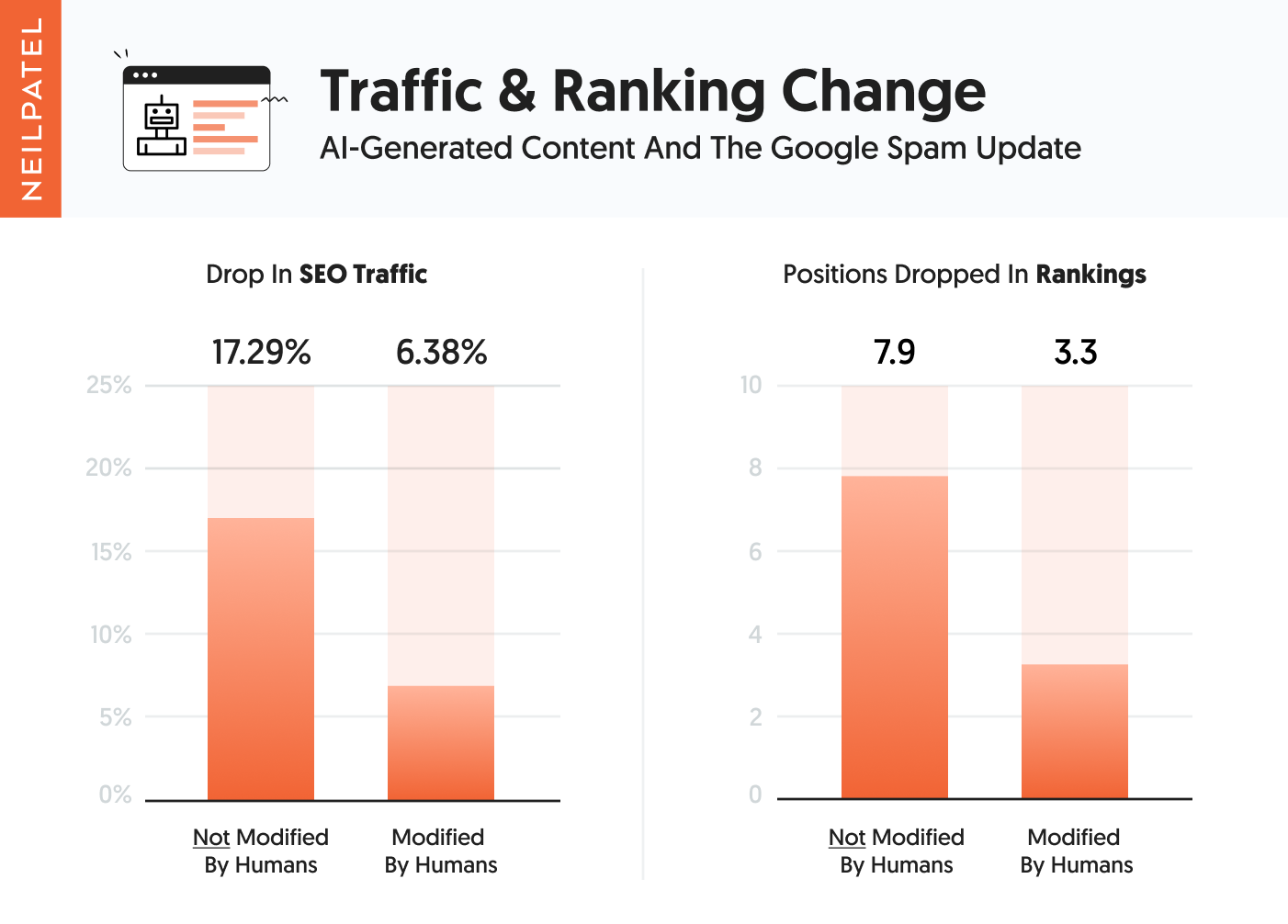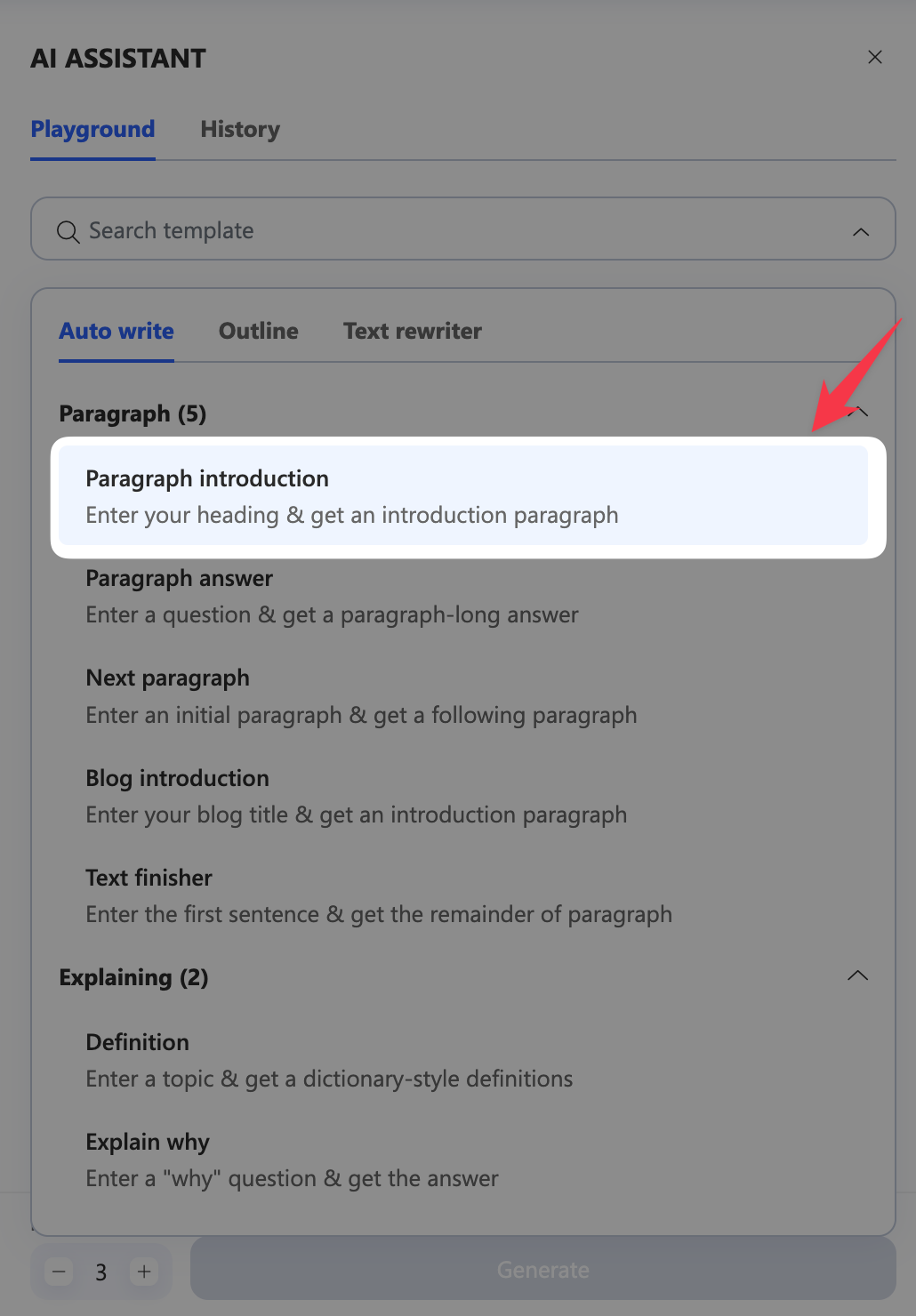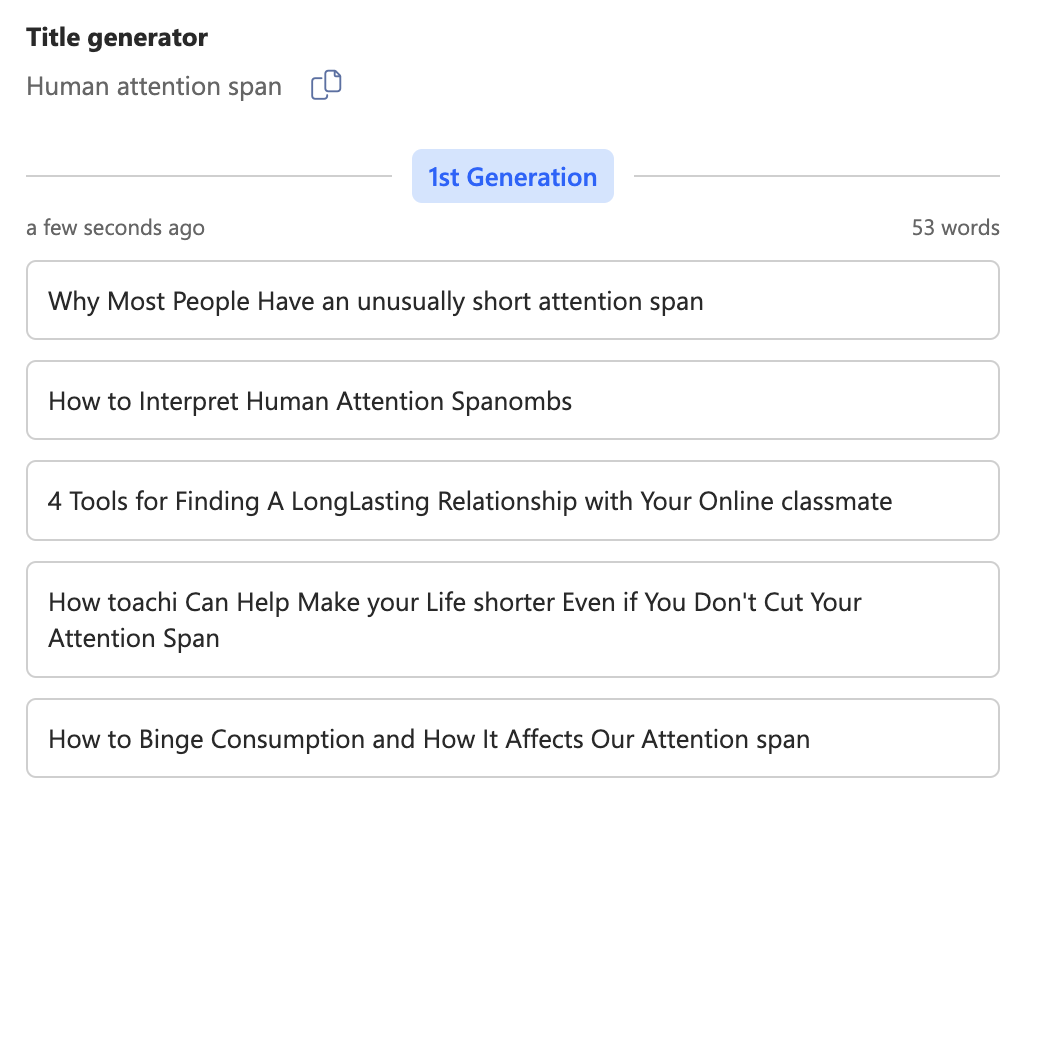The landscape of AI-generated content and its relationship with search engines, notably Google, has undergone significant changes since 2022.
Let’s explore the evolution of this relationship and learn how to create AI-assisted content that aligns with Google’s current guidelines.
The Evolution of Google’s Stance on AI-Generated Content
April 1, 2022: The Initial Controversy
On this date, John Mueller, Senior Webmaster Trends Analyst at Google, sparked a heated debate in the SEO community by referring to AI-generated content as spam during a Google SEO Office Hours hangout. He likened it to automatically generated content, which violated Google’s Webmaster guidelines at the time.
His statement sparked diverse reactions.
For the camp of people vehemently against AI content generation, this was some sort of validation of their stance that humans must create content, not machines.
November 2022: The Spam Update Impact
Then, people already publishing AI content were afraid of the repercussions. In fact, blogs like Neil Patel’s have already been penalized following November 2022’s Spam update. In an article published on the blog, he shared the ranking and traffic changes of AI-generated content:
As you can see above, AI content that humans didn’t modify before publishing was punished more severely than those that were.
This raised concerns about the future of AI in content creation.
February 2023: Google’s Clarification
On February 8, 2023, Google released a significant update to its guidance on AI-generated content. They clarified that not all use of automation is inherently against their guidelines. Instead, they emphasized the importance of creating helpful, people-first content regardless of how it’s produced.
However, if the content is generated using AI to manipulate ranking in search results, it still violates their spam policies.
2023-Current State (as of the time of writing): Continuous Refinement
Throughout 2023 and into 2024, Google continued to refine its stance, focusing on the quality and value of content rather than its origin. They introduced more nuanced guidelines for using AI in content creation, especially for creating helpful, reliable, and people-first content.
They now view AI as a tool that can assist in content creation, much like spell-checkers or grammar tools. The focus is on the end result - high-quality, valuable content for users.
So, how exactly can we ensure your content follows Google’s guidelines? Let’s first look at some distinctive definitions.
AI-Assisted Writing VS. AI-Generated Writing
Although often used synonymously, there is a difference between AI-assisted writing and AI-generated writing.
AI-assisted writing is when AI tools are used to inspire and guide writers during content creation. In this case, they are not used to create the entire content or copy but rather short texts periodically.
In the words of Mike King, Founder and CEO of iPullRank:

Content that falls under this category is modified by humans, reducing the risk of it being seen as spam by search engines.
AI-generated writing, on the other hand, occurs when text produced by tools is published verbatim without any form of human modification. Because some language models like GPT-3 work by gathering information from existing information, this generated content is likely copycats, which is why modification is necessary.
According to Ryan Law of Animalz:

So, to avoid SEO penalization, it’s best to see GPT-3 as an assistant instead of a content generator.
This is why we tout our AI feature as the “Writer’s Assistant” in affirmation of our users’ experiences:

Of course, certain terms and conditions still have to be met for your content not to be considered spam, but viewing AI as an assistant is a good first step.
With that being said, let’s head to the part where we talk about how to create AI-assisted content that aligns with Google’s current guidelines.
How to Ensure Your AI Content Follows Google’s Guidelines
Of course, Google can detect articles created by AI.
But, when it comes to sanitizing search results, Google classifies every piece of content that doesn’t align with their helpful content update checklist as spam and penalizes it.
Some affected content will be of AI origin, while others will not. After all, humans create low-quality articles too.
The point is that AI-assisted writing can be high quality and meet Google’s standards, while human writing can be fluff and generic.
The brands that were hit for AI writing were only affected because the writing was either low quality or violated basic principles. It was not because it was detected that they used AI tools during creation.
After all, as per their latest update, content quality is more important than content origin.
So, here are tips to guide you in producing great content when using AI.
-
Following the Helpful Content Update Checklist
The first rule of Google is to create content for humans, not search engines. It’s why we’ve been encouraging the content community to go back to human and SEO basics. To ensure your AI-assisted content doesn’t get the Google hammer, you must answer affirmatively to the following questions:

-
Reframing Texts
Lazy writing is publishing AI-generated text word for word. It is the type of practice that Google kicks against. A rule of thumb is to rephrase AI results in your own words. This will help:
-
Avoid plagiarism, as these tools sometimes unintentionally plagiarize.
-
Make sure the text is clearly worded, sensible, and fits perfectly into the existing text.
-
Ensure it matches the brand’s tone and style.
-
Offering Fresh Perspective
It’s impossible to give what you don’t have. For example, GPT-3 cannot form original thoughts or opinions. They only build on what is already on the internet. To stand out and thrive in a sea of similar content, you have to provide a fresh perspective.
Since AI is incapable of this, you should start with an original idea or a different angle, and when stuck, use AI to flesh out your idea. Remember, only for short bursts of text, not long form.
-
Fact-Checking Everything
One of the most prevalent problems with generative text models is they sometimes make things up. Even though they seem plausible, these falsehoods are generated because of the text models' “inability to ground their responses in the external world. This is because they were trained to sound truthful, not to be truthful,” writes Satavisa Pati, Senior Content Analyst at Analytics Insights.
This propensity makes it imperative to fact-check AI results, especially figures, stats, or Your Money or Your Life (YMYL) content. Remember, truthfulness is an important criterion for fulfilling E-E-A-T, Google’s quality checklist. So don’t swallow everything hook, line, and sinker. Do quality assurance.
-
Personalization and Empathy
Finally, when using AI during content creation, infuse personality so it doesn’t feel robotic. You can do this by being humorous, sharing personal anecdotes, customer stories, etc.
Also, empathize with the reader. Acknowledge their pain points, and assure them of a solution in your content.
Most of the raw text generated by AI will miss some of the aforementioned elements, so you must include them before publishing.
For instance, by entering the prompt “The dwindling attention span of humans” into WriterZen’s Paragraph Introduction (after activating the AI Assistant in the app’s Content Creator):

The results below are generated:

While the results are not bad, we could rewrite the second one so it reads like this:
“It’s a Monday morning. You’re at your office desk and decide to scroll through your Twitter feed quickly. After a seemingly short while, you look up and realize an hour has passed. You’ve spent more time on your phone instead of on your work. If this is your experience, you’re not alone. The dwindling attention span of humans is a widespread and growing problem.”
See?
The new text is more relatable and lively.
Why Use AI in Content Creation?
The opportunities AI language models offer are tremendous and far outweigh the cons, which is something the skeptics fail to see.
Some of these use cases include:
Inspiration
Someone once said, "True creativity starts with a blank page."
While that may be true, the blank page is your enemy sometimes. In times like that, AI can come to your rescue. Its auto-generated text populating a page can spur your brain into action and eliminate writer’s block:

Time-Saving
While we’ve stated that you shouldn’t use AI to generate whole content or copy, you can use it to take care of simple (and pesky) tasks that somehow take up a lot of time. Such tasks include WriterZen, which can help with all these.
You can generate headlines by switching to the Outline tab and scrolling down to Title Generator:

Then enter your seed keyword:

And voila, headlines auto-generated for you:

Keep generating more ideas until you find a suitable one.
Same process goes for obtaining meta descriptions and content outlines.
Enter a title and get outline suggestions:

Or content descriptions:

Saving time is vital in this era of content shock, as we’re already disadvantaged. Content creation takes more time (74% now compared to 2014) than ever, so it’s wise to automate wherever possible.
Distribute Content
We’ve heard it repeatedly: Content distribution is equally important as content creation.
The mantra of industry Leaders like Ross Simmonds is to “create once and distribute forever.”
And it makes sense. What use is it to spend all that time creating content if people don’t get to read it?
Get more eyes on your blog posts by distributing and promoting them effectively.
WriterZen’s AI Assistant can also facilitate this process.
Instead of painstakingly having to rework your content for different social media channels manually, you can rewrite certain paragraphs so they sound different. You can also automatically summarize long texts in WriterZen for channels that don’t favor too much text.
These options are available in the Text Rewriter tab:

Simplified Workflow to Avoid Tool Fatigue
Before you subscribe to one of the hundreds of available AI writing tools, you need to consider the dangers of tool fatigue.
Tool fatigue happens when employees are overwhelmed by the number of tools they have to work with.
More is not always better.
It’s almost always advisable to stick to fewer work tools.
Instead of getting another AI software for your content team, how about using one for all your content processes like content strategy, AI writing, and optimization?
WriterZen is one such tool.
It simplifies content workflows and eliminates tool fatigue. The true definition of an all-in-one tool, as our users confirm:
Intrigued? You can get WriterZen’s 21-day free trial HERE. We also provide a lifetime deal that saves you a bunch!


















